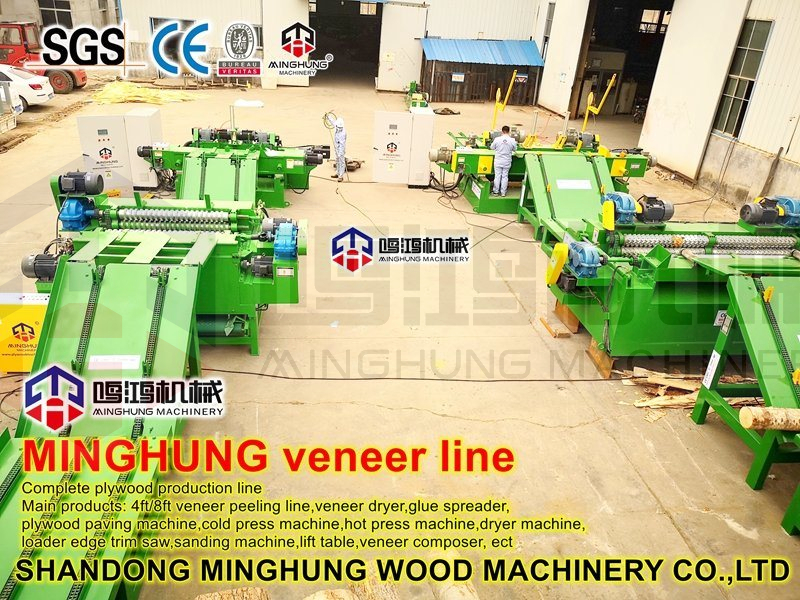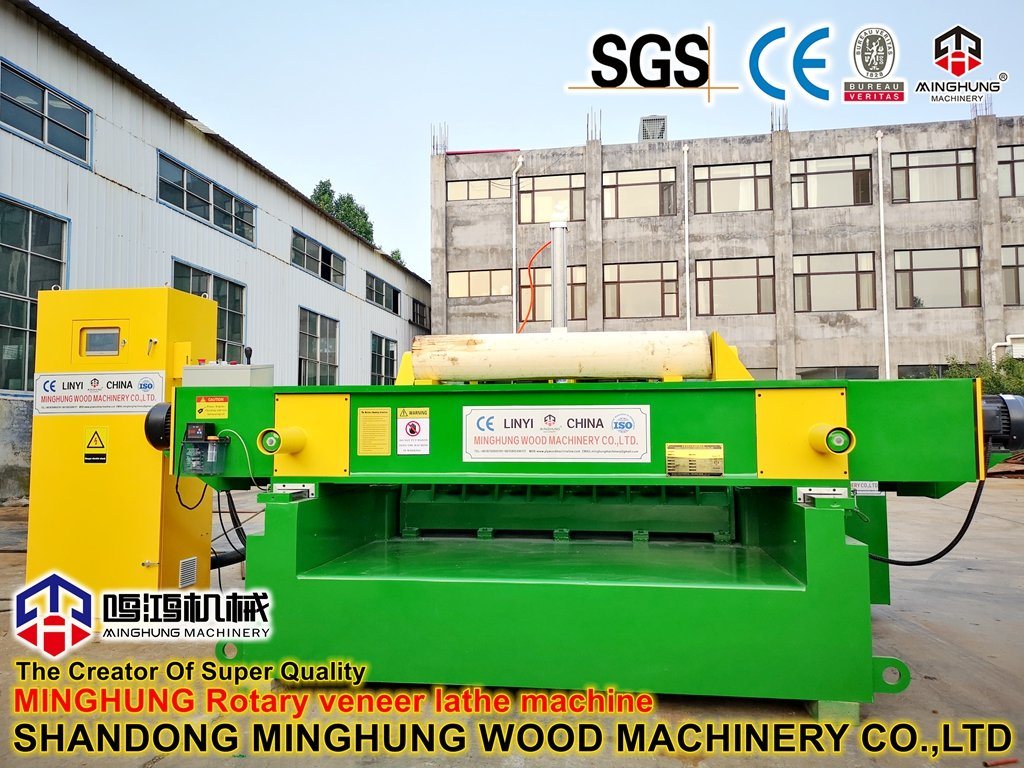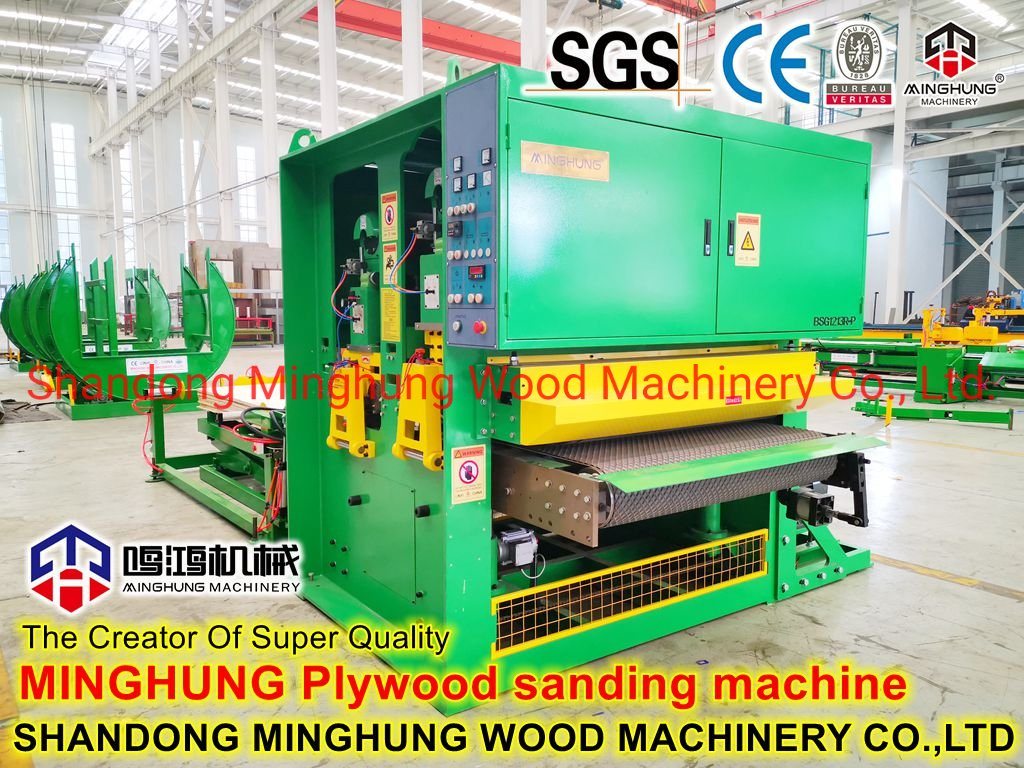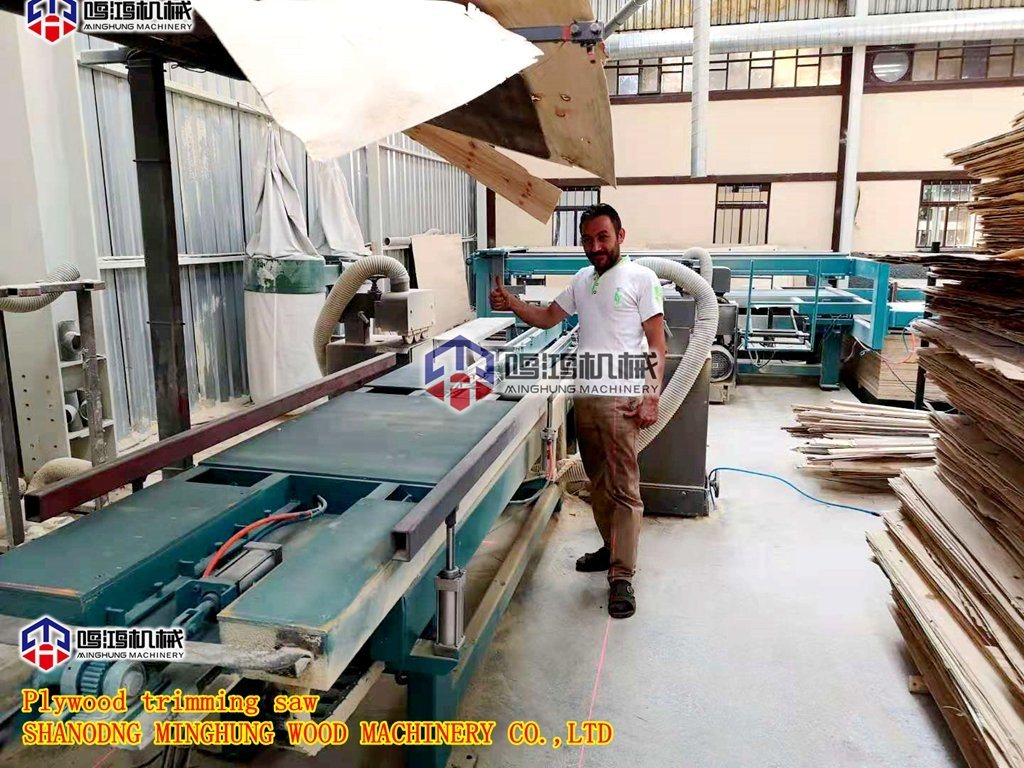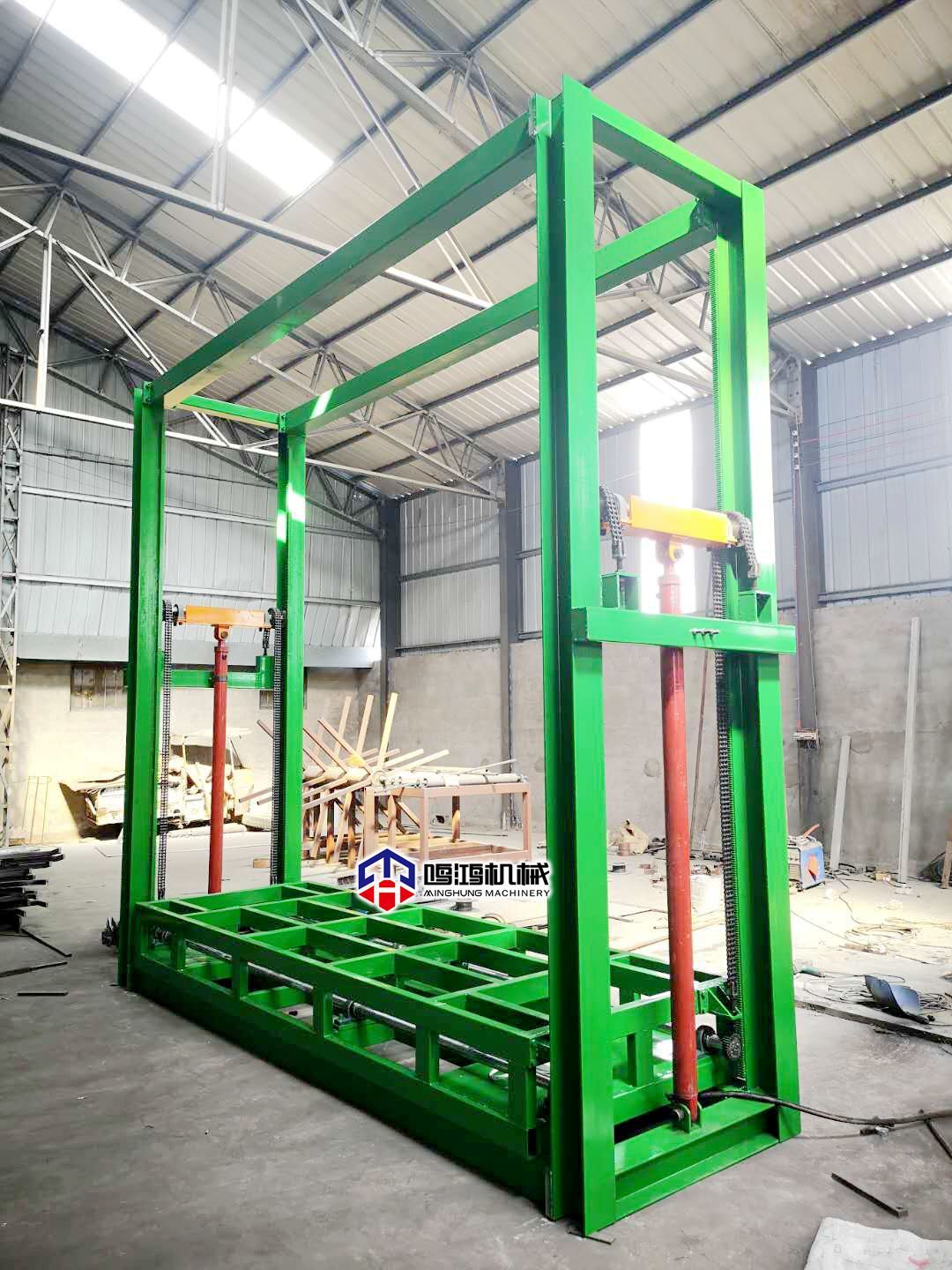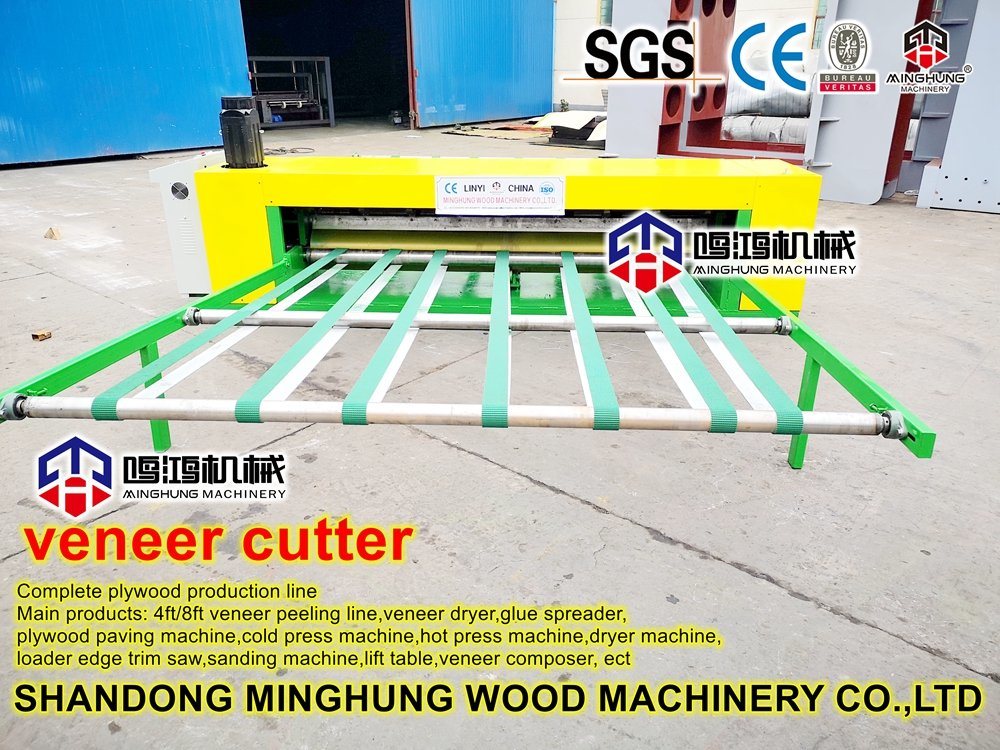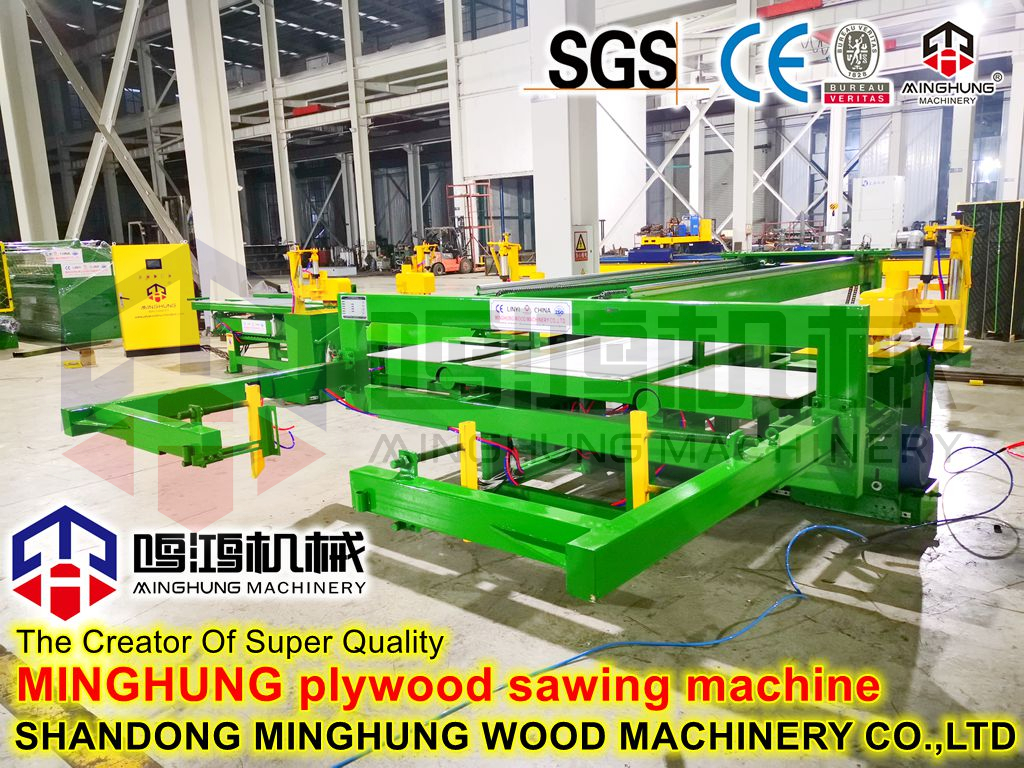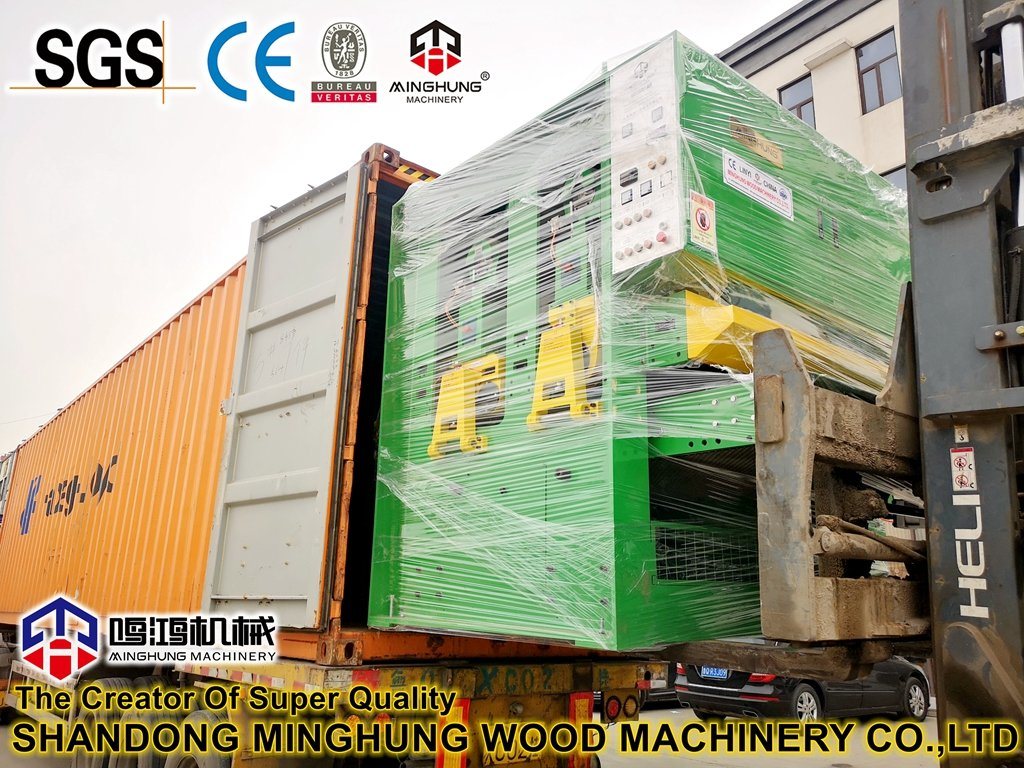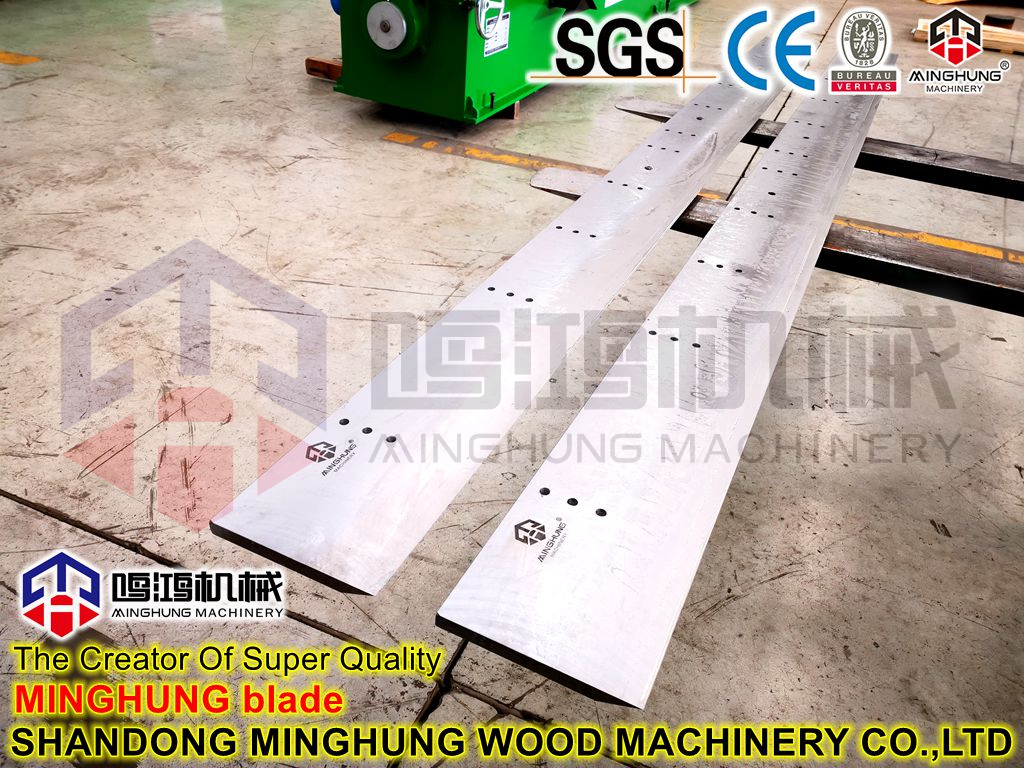I. Engineered Wood Panels
1. Definition
Engineered Wood Panels are composite board products manufactured from wood or non-wood plant fibers through processes including mechanical separation, drying, adhesive application, forming, and hot pressing.
Core Advantages:
Substitute solid wood, alleviating timber resource scarcity
Large dimensions, uniform structure, minimal deformation
Functional enhancements possible (flame-retardant/moisture-resistant/antibacterial)
2. Primary Types of Engineered Wood Panels
2.1 Classification by Raw Material & Process
Type | Raw Material | Structural Feature | Density (kg/m³) |
Plywood | Rotary-cut veneers | Odd-numbered cross-laminated layers | 450-650 |
Fiberboard | Wood fibers (refined to pulp) | Homogeneous, non-layered | Hardboard >800 |
MDF 600-800 |
Softboard <450 |
Particleboard | Wood flakes/chips | Fine surface + coarse core particles | 550-750 |
OSB | Strands (length-width ratio >3) | Surface strands longitudinally oriented + Cross-oriented core | 600-680 |
Blockboard | Solid wood strips + veneer faces | "Sandwich" core structure | 450-550 |
2.2 Functional Classification
Structural Panels (e.g., OSB compliant with ASTM D1037)
Decorative Substrates (e.g., MDF for PVC/wood veneer overlays)
Specialty Panels: Flame-retardant (oxygen index >30%), Moisture-resistant (thickness swelling <10%)
3. Engineered Wood Panel Production Process
Logs --> Debarking & Chipping --> Fiber/Particle Preparation --> Drying --> Adhesive Blending --> Forming --> Pre-pressing --> Hot Pressing --> Cooling --> Trimming & Sanding --> Grading & Packaging

Key Process Details
Process | Technical Requirements | Equipment Examples | Quality Control Points |
Raw Material Prep | Wood moisture <8% | Drum chipper / Refiner | Qualified particle size rate >95% |
Adhesive Blending | Adhesive coverage >90% | Ring blender | Solid resin content: 8-12% |
Forming | Density deviation <±3% | Mechanical/Air forming station | Longitudinal density gradient |
Hot Pressing | Temp: 180-220℃, Pressure: 2-5MPa | Continuous flat-press / Multi-opening press | Curing time = thickness × 1.2 min/mm |
Post-Processing | Sanding removal: 0.2-0.5mm/face | Wide-belt sander | Thickness tolerance: ±0.1mm |
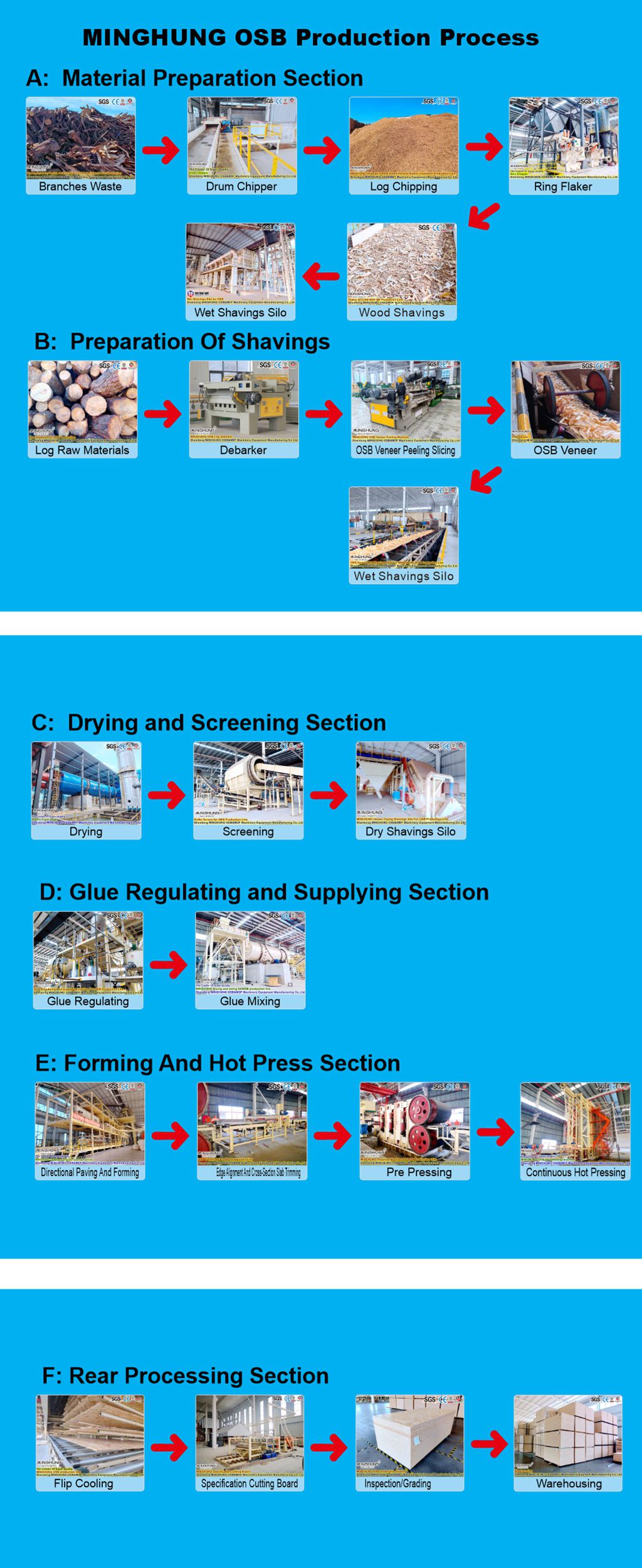
Ⅱ. Core Technology of Continuous Flat Press
1. Basic Definition
The continuous flat press is the core equipment in wood-based panel (MDF, Particleboard, OSB) production lines. It enables 24/7 continuous pressing via steel belt conveyance, with line speeds reaching 30-100 m/min – tripling efficiency compared to batch presses.

2. Core Structure
Steel Belt System: Two heat-resistant (250°C) alloy belts with non-stick coatings
Modular Heating Platens: Segmented design (typically 12-30 modules), each independently controlled:
Hydraulic pressure: 0-10MPa adjustable (entry zone >8MPa, exit zone <2MPa)
Temperature: Thermal oil/steam heating (180-230°C ±1°C)
Thickness Control:
Laser scanners monitor thickness in real-time (accuracy ±0.05mm)
Servo hydraulic cylinders dynamically adjust platen gaps

3. Workflow
Dried raw material → Forming → Pre-pressing → Continuous hot pressing (gradient pressure/temperature) → Cutting → Cooling & Stacking
Process Features:
Gradient Pressing: High temp/pressure at entry (rapid resin activation), low at exit (prevent springback)
Density Optimization: Longitudinal density variation <3% (vs. >8% in conventional presses)
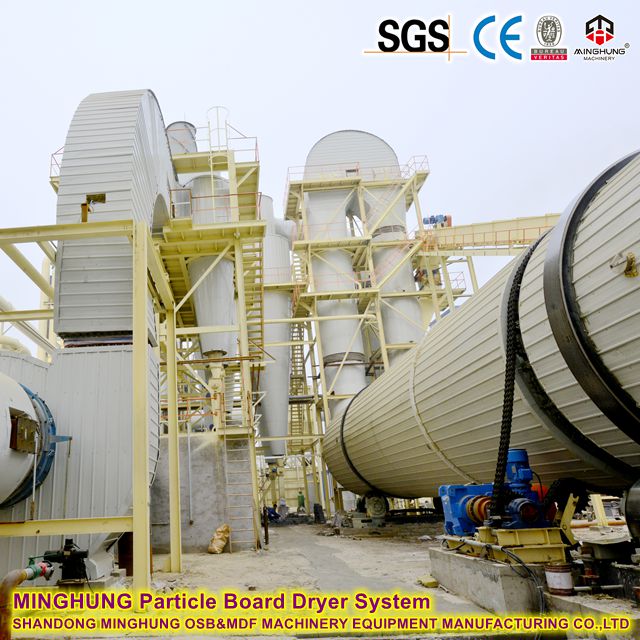
dryer
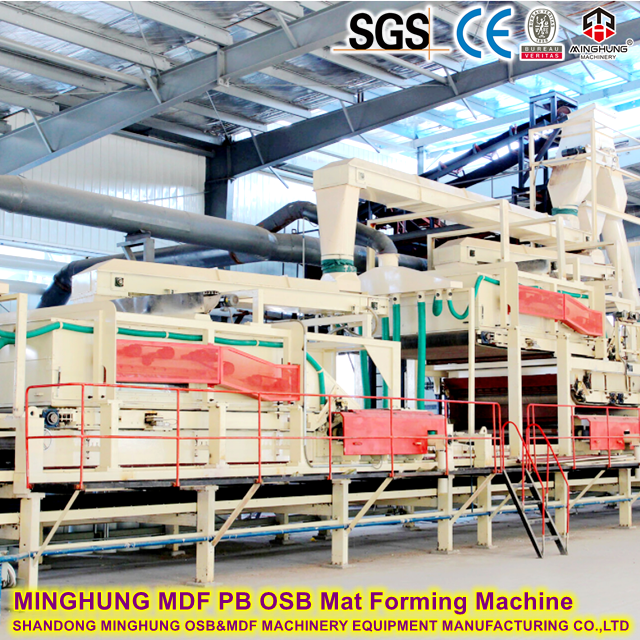
mat forming machine

continuous pre-press
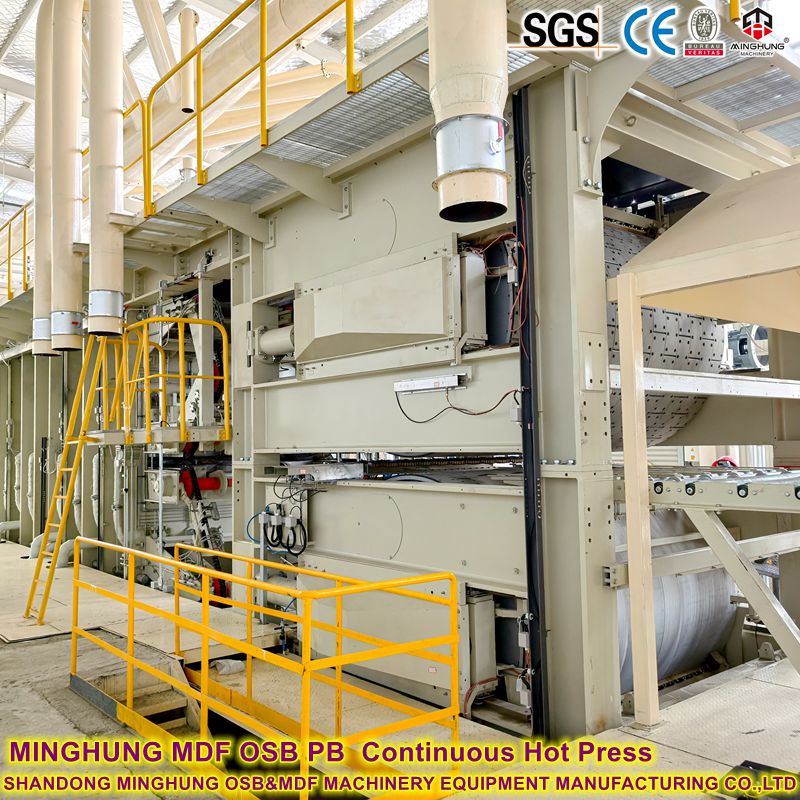
continuous hot press
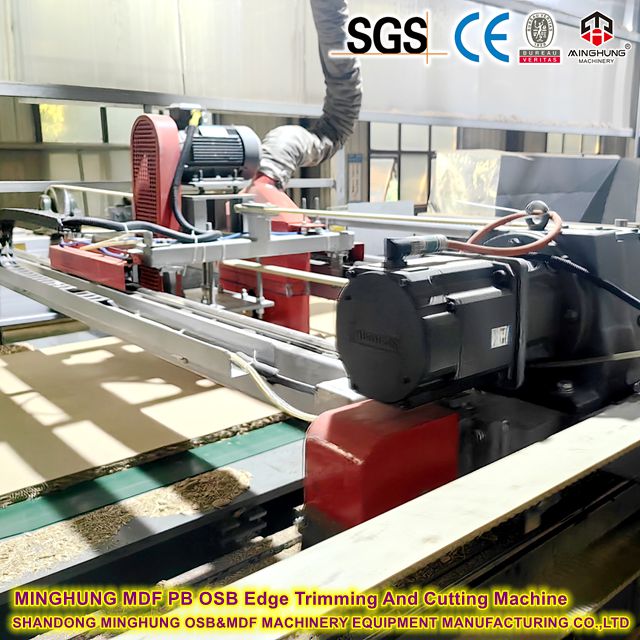
Cross-cut saw
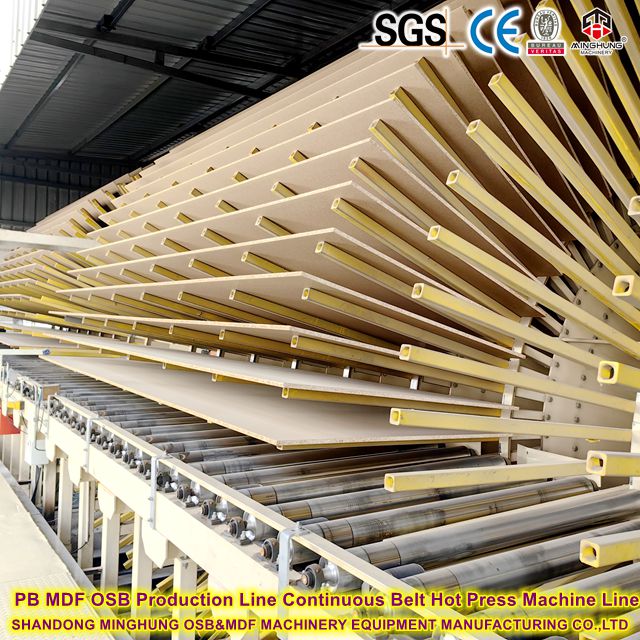
Dryer rack
Ⅲ. Intelligent Technology Integration
1. Smart Sensing Layer
Multi-sensor Network:
Infrared thermal cameras: Real-time temperature field monitoring (0.5°C resolution)
Microwave moisture detectors: Online measurement (±0.3% accuracy)
Acoustic emission sensors: Anomaly vibration detection
2. Intelligent Decision Layer
Self-optimizing Process Parameters:
Resin curing models based on deep learning dynamically adjust temperature profiles
Case study: 12% shorter press time and 15% energy reduction for 18mm OSB
Digital Twin System:
Virtual press mirrors physical equipment status
Predictive maintenance: 72-hour early warning for hydraulic failures
3. Smart Execution Layer
Adaptive Control:
Intelligent belt steering: Laser positioning + pneumatic servo (accuracy ±0.1mm)
Pressure compensation: Auto-adjusts module pressure based on material fluctuations (response <50ms)
4. Cloud-Edge Architecture
Edge Computing: Real-time command execution (<10ms latency)
Cloud Big Data: Historical data trains optimization models, enabling multi-factory knowledge sharing
Ⅳ. Technological Advantages & Industry Impact
1. Breakthrough Performance
Parameter | Conventional Press | Intelligent Press |
Thickness tolerance | ±0.3mm | ±0.1mm |
Energy consumption | 180-220 kWh/ton | 130-150 kWh/ton |
Product changeover | 30-60 minutes | <5 minutes |
2. Typical Applications
Customized Production: One line handles both HDF (2.5g/cm³) and lightweight particleboard (0.6g/cm³)
Zero-Defect Manufacturing: AI vision detects surface flaws (>99.2% accuracy)
Carbon Footprint Management: Real-time energy/carbon tracking for green production
For more information, welcome contact us, we will reply you quickly and offer working videos with you.
Whatsapp: +8618769900191 +8615589105786 +8618954906501
Email: osbmdfmachinery@gmail.com

